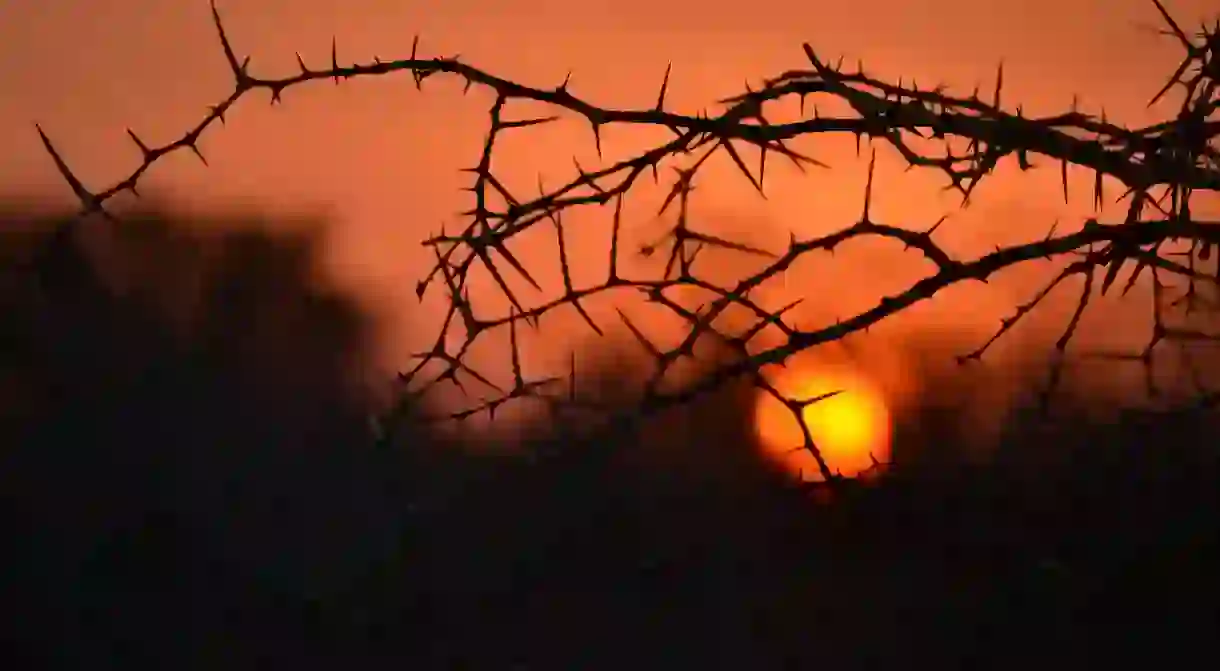An Essential Guide to South Africa's Kruger National Park

At 19,485 square kilometres (7,523 square miles), the Kruger National Park is the size of a small country and is located in the northeast of South Africa. Here’s our essential guide to ensure you’re well equipped for your stay.
When to visit
The best time to visit the Kruger National Park is during the South African winter, from June to September. Over this period vegetation isn’t as dense so it’ll be easier to spot animals. The park is also not as warm as in the summer, making the trip much more comfortable. You can expect temperatures of 30 degrees Celsius (86 degrees Fahrenheit) and higher in the peak of summer.

Having said this, January to March is a quiet time in the park as school holidays are over, and accommodation should be easier to book. It’s important to remember that the camps inside the Kruger National Park get booked fast, so plan in advance.

How to get there and which gates to use
For those travelling by air, the most convenient airport is in Skukuza, situated within the Kruger National Park, and there are regular flights from many airports within South Africa.
From Johannesburg, the park is approximately a five-hour drive but your route will depend on which camp you stay in. There are nine South African entry gates, which all open and close at the same times, and vary by season. Opening times range from 5:30 to 6AM, and closing times from 5:30 to 6:30 PM. Not adhering to these times will result in a fine.

This is of course overlooked if there’s a major wildlife incident or sighting. It’s not uncommon to be stuck on the other side of a 500-strong buffalo herd crossing the road, or having a lion kill take place in the middle of the main road leading back to your camp.
It’s important to know that there’s no leaving the camps after gate-closing time, except if going on a nighttime game drive led by an official game ranger, which should be booked in advance.
What and where to eat
There are convenience and gift stores at camps and some have restaurants, but it helps to work out a menu and pack only what you need.
There are braai facilities at all camps and it’s best to pack food that’s quick and easy to prepare. Most self-catering units have basic kitchen facilities, such as fridges, stoves, crockery and cutlery.
Remember that you’ll spend much of your time in the car or on a game viewing vehicle, so your choice of food shouldn’t be too messy – stick to light snacks, such as sandwiches, fruit and health bars.

Wildlife in the park
The Kruger National Park is well-known for Big 5 sightings, and you can expect to see much more. Different animals are more abundant in certain parts of the park, and popular hotspots for wildlife sightings are Crocodile Bridge, Lower Sabie, Skukuza and Satara.
Satara, for example, is considered best for viewing lions and leopards, plus you’re just about guaranteed to spot honey badgers inside the camp. Early morning game drives on tar roads make for spectacular sightings, as this is when animals, especially predators, are known to be on the move.

The Kruger Park is also fantastic for birding, and between October and March the bird population grows by approximately 200 migrant species. Visit waterholes and riverbeds and wait for the fish eagle’s call, look out for kingfishers and the many different storks. Other birds you’ll spot include the protected Southern ground hornbill, lilac-breasted rollers, bee-eaters and many more.

It’s important to note that the animals in the park are all completely wild and shouldn’t be approached. Never get out of the vehicle unless you are in a designated picnic or viewing spot, such as Afsaal or Bobbejaan Krans, and keep windows closed and doors locked when animals are nearby.
Survival tips
The Kruger Park is situated in a malaria area, so it’s important to take the necessary precautions. The highest risk period is between November and April and you can find out about medication from a doctor or pharmacist.
For any serious medical events there is a hospital in Skukuza providing emergency services 24 hours a day.

Some more things to note
If you are a regular visitor of South African National Parks, it would be wise to invest in a Wild Card, as it includes conservation fees for 12 months, as well as perks, such as exclusive offers and competitions.
The speed limit in the park is between 30-50 kilometres (18-30 miles) per hour, and visitors stop often to view animals – sometimes you can even sit in one spot for hours on end. This needs to be calculated into your driving times and estimated time of arrival at the camp.
Double check gate opening and closing times before travelling to the Kruger National Park. Main gate times differ from rest camp gate times.
As a visitor, you have the options to drive in your own, or rented, vehicle, or to book game drives.

What to pack
Don’t forget to pack these essentials when traveling to South Africa: comfortable shoes, a wind breaker or warm jacket, a bathing suit, binoculars, camera, birding guide, insect repellent, sunscreen and a hat, and, in this case, a map of the Kruger National Park (available throughout the park).













